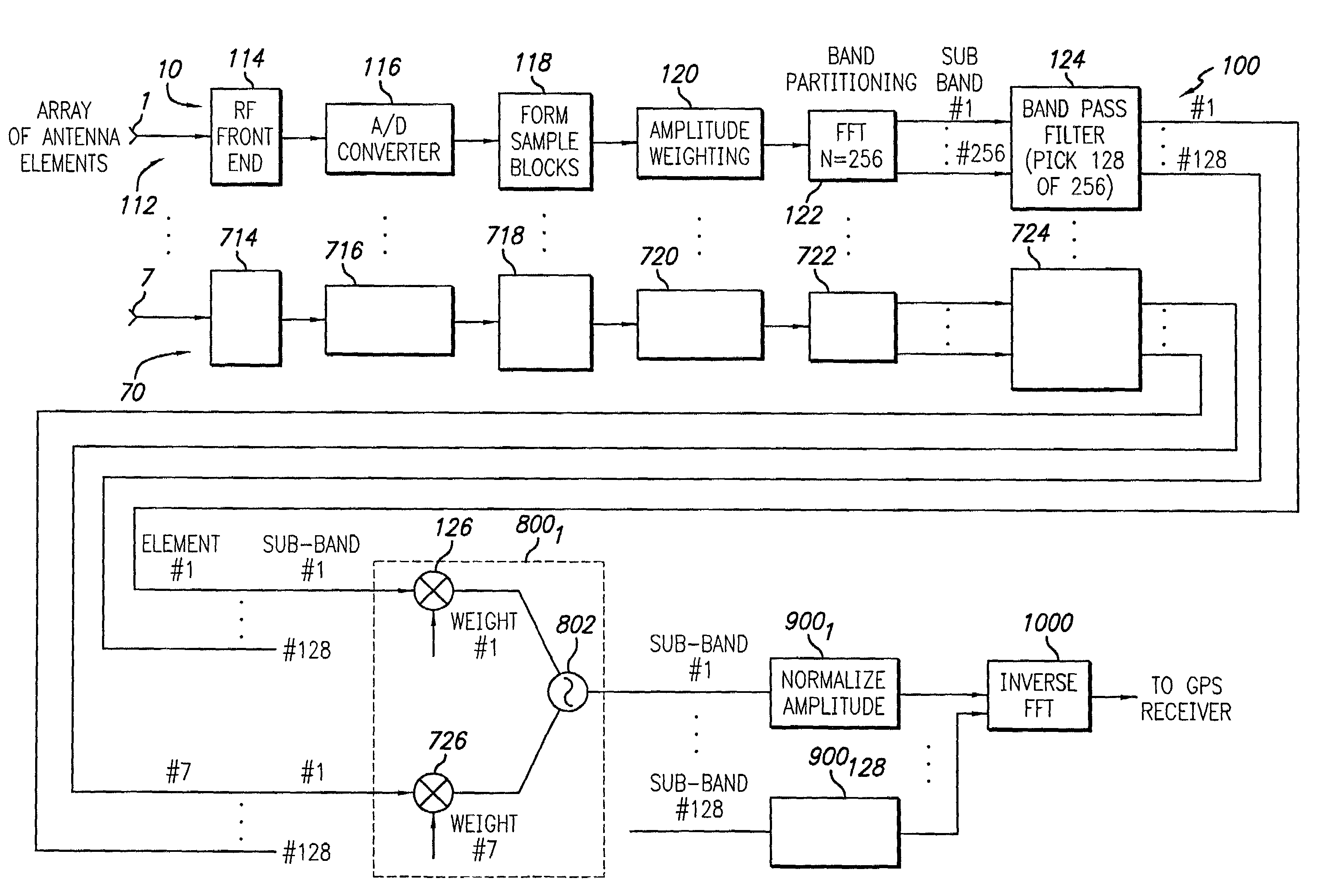System and method for subband beamforming using adaptive weight normalization
a subband beam and weight normalization technology, applied in the field of communication systems, can solve the problems of introducing unacceptable errors, limiting capabilities, and affecting the performance of subband beamforming, and achieves the effects of reducing time-delay bias or distortion, improving the cancellation effect of narrowband interference, and low cos
- Summary
- Abstract
- Description
- Claims
- Application Information
AI Technical Summary
Benefits of technology
Problems solved by technology
Method used
Image
Examples
Embodiment Construction
[0019]Illustrative embodiments and exemplary applications will now be described with reference to the accompanying drawings to disclose the advantageous teachings of the present invention.
[0020]While the present invention is described herein with reference to illustrative embodiments for particular applications, it should be understood that the invention is not limited thereto. Those having ordinary skill in the art and access to the teachings provided herein will recognize additional modifications, applications, and embodiments within the scope
[0021]FIG. 1 is a block diagram of an illustrative implementation of a system for subband beamforming using adaptive weight normalization in accordance with the teachings of the present invention. The system 100 is adapted for use with an array antenna 112 having a number of elements (m) of which seven are illustrated in FIG. 1 and numbered 1–7. Each element of the array 112 feeds an associated channel of the beamforming system 100. That is, ...
PUM
 Login to View More
Login to View More Abstract
Description
Claims
Application Information
 Login to View More
Login to View More - R&D
- Intellectual Property
- Life Sciences
- Materials
- Tech Scout
- Unparalleled Data Quality
- Higher Quality Content
- 60% Fewer Hallucinations
Browse by: Latest US Patents, China's latest patents, Technical Efficacy Thesaurus, Application Domain, Technology Topic, Popular Technical Reports.
© 2025 PatSnap. All rights reserved.Legal|Privacy policy|Modern Slavery Act Transparency Statement|Sitemap|About US| Contact US: help@patsnap.com



